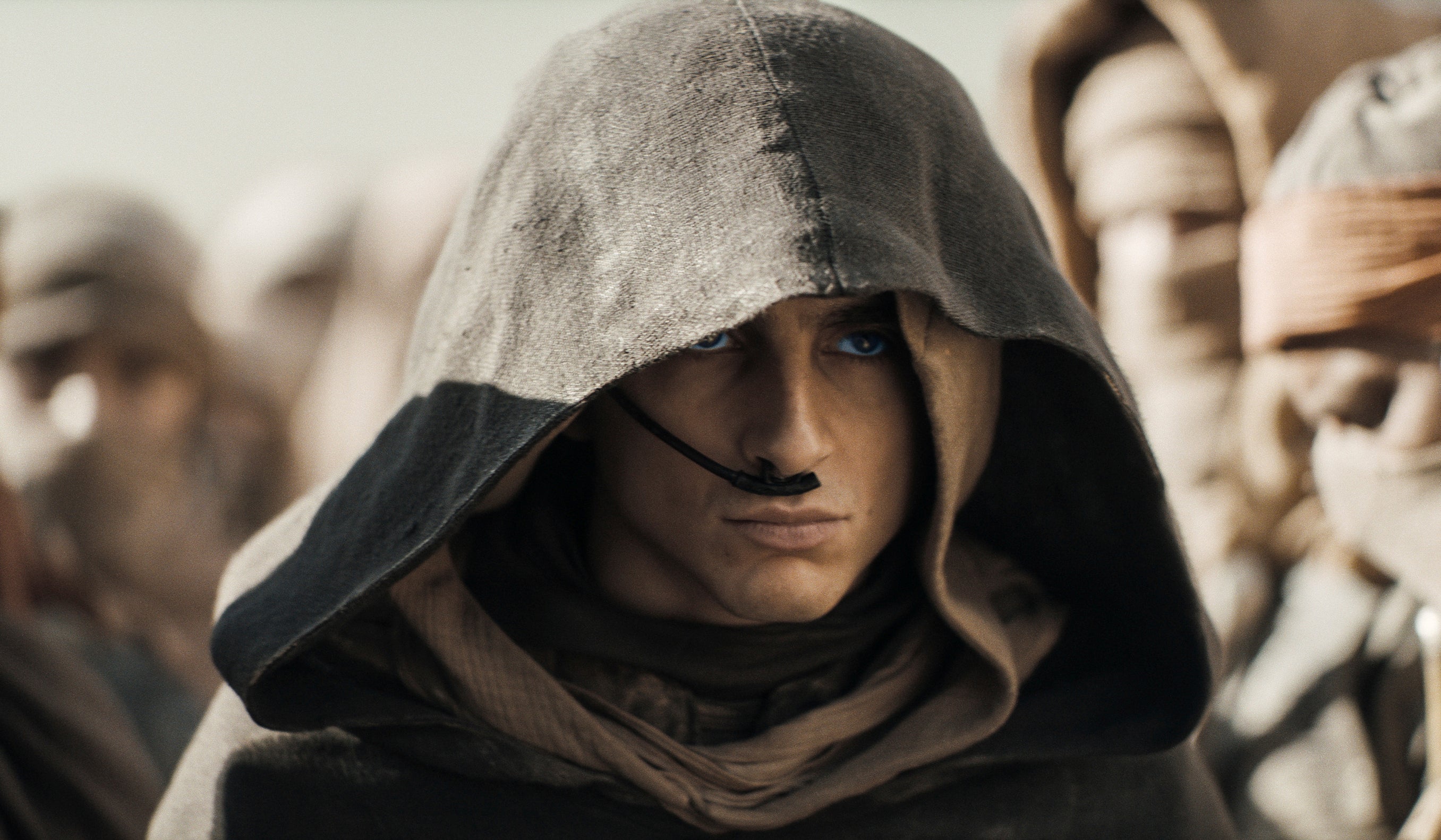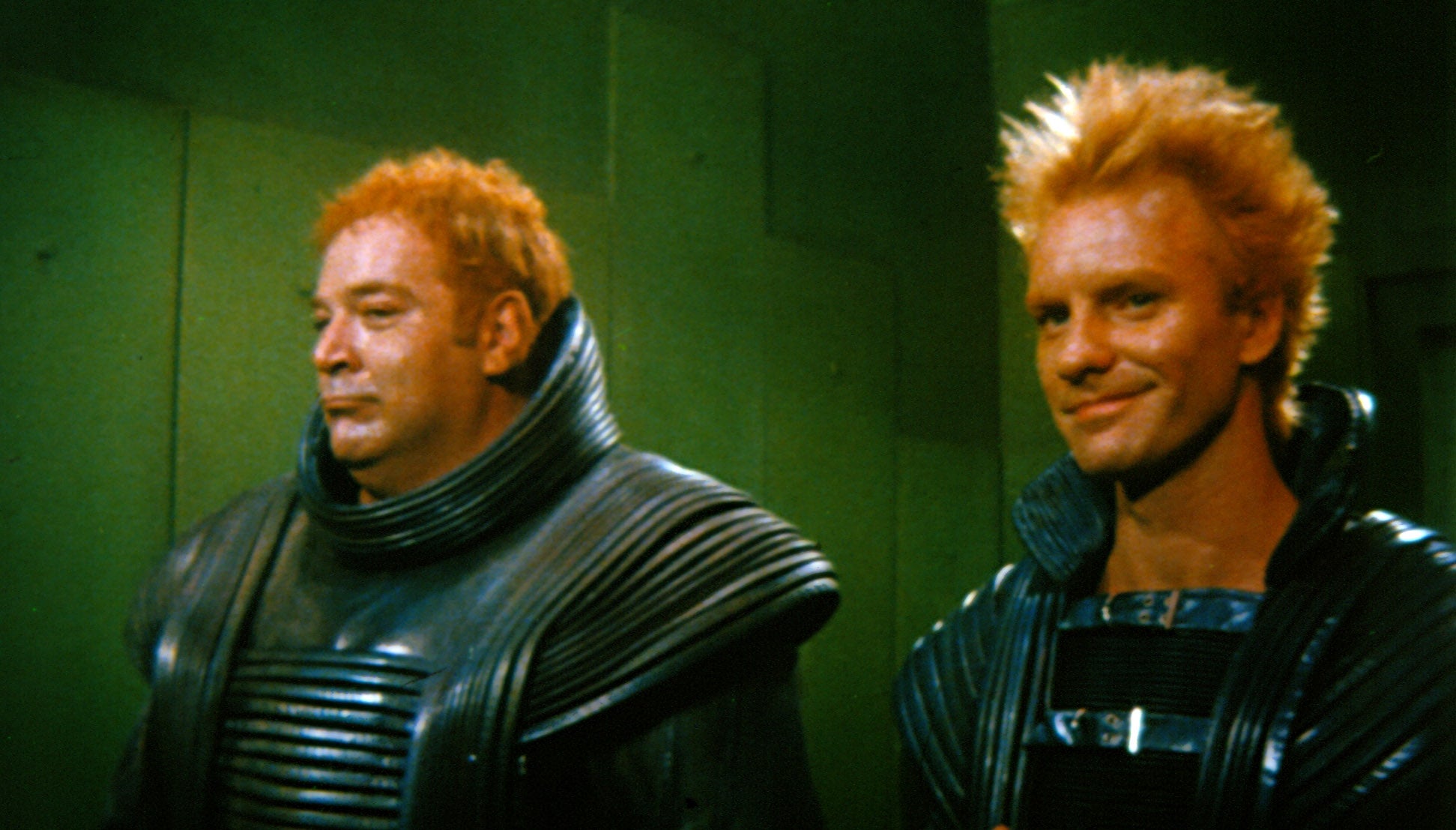Sand and deliver: How a revolutionary video game rescued Frank Herbert’s Dune from obscurity
Denis Villeneuve’s new movies have introduced the world of ‘Dune’ to a wider audience than ever. But the best adaptation of the novel may actually have been a groundbreaking 1992 PC game, writes Ed Power

Your support helps us to tell the story
From reproductive rights to climate change to Big Tech, The Independent is on the ground when the story is developing. Whether it's investigating the financials of Elon Musk's pro-Trump PAC or producing our latest documentary, 'The A Word', which shines a light on the American women fighting for reproductive rights, we know how important it is to parse out the facts from the messaging.
At such a critical moment in US history, we need reporters on the ground. Your donation allows us to keep sending journalists to speak to both sides of the story.
The Independent is trusted by Americans across the entire political spectrum. And unlike many other quality news outlets, we choose not to lock Americans out of our reporting and analysis with paywalls. We believe quality journalism should be available to everyone, paid for by those who can afford it.
Your support makes all the difference.Today, Dune is the sci-fi saga to rule them all. The countdown to Dune: Part Two, the concluding half of Denis Villeneuve’s adaptation of the 1965 Frank Herbert novel, has been accompanied by dust-storms of hype and five-star reviews. And that is just the start of Dune’s grip on popular culture. You can buy plush replicas of the book’s iconic sandworms and a 1,369-piece Lego model of the House Atreides ducal Ornithopter (the bug-like vehicle Timothée Chalamet and co use to whiz around). And who could forget the sandworm-themed popcorn buckets soon to be unleashed on unsuspecting American cinema-goers, currently boggling minds across social media? Aside from Tolkien’s Lord of the Rings, no adult work of speculative fiction casts so long a shadow.
But it wasn’t always thus. Thirty-two years ago, Dune and its tale of dynastic struggle in the far future was a cult classic in danger of sinking into obscurity. In 1992, most people’s freshest memory of it was still David Lynch’s messy and critically panned 1984 film adaptation. Herbert himself had died in 1986 at age 65; several months earlier, his final Dune sequel, Chapterhouse Dune, was received as a baffling coda to the wonderful original novel (the titular planet Arrakis having been long destroyed in Herbert’s timeline). Dune seemed doomed.
Then, from the deep desert, came a miracle – a pixellated wonder that kept awareness of the franchise alive. It was the video game Dune II: The Battle for Arrakis. In its own way, it would create a legacy every bit as impactful as Herbert’s original book.
Why Dune II, you may wonder. What happened to Dune I? There was, in fact, a “Dune I” video game for PC, Commodore Amiga and Sega Mega Drive, released 11 months before Battle for Arrakis in January 1992. However, that title was a direct adaptation of the Lynch film and carried with it the baggage of the director’s woebegone attempt at translating Herbert’s world to the screen. Dune II was something else: it ignored Lynch’s take entirely and instead rebuilt Arrakis from the ground up.
In so doing, it captured to stunning effect the bleak majesty of Herbert’s vision. As a player, you’re pitched straight into the action as you take on the role of one of the Great Houses of the Galactic Imperium, who are seeking to exploit the desert planet and its precious reserves of the quasi-mystical spice “melange”. Just like the source material, the game is replete with inter-family struggle, dizzying violence – and huge worms emerging from the sand when you least expect.
Dune II’s Arrakis was as brutal and unforgiving as Herbert’s. It also established an entirely new video game genre of real-time strategy. Much like Arrakis’s Fremen fighting the wicked Harkonnens in the book, in Dune II – originally released for PC and, later, Sega Mega Drive and Amiga – victory demanded a blend of fast reaction times and strategic vision. The player had to face their fear, permit it to pass over and through them – and then rack up a new personal best on the high score table.

Leo Wiggins, producer of the Gom Jabbar podcast, says that the game came at a “crucial point” for Dune fans – the gap between Herbert’s death and the time in the mid 1990s when the author’s son Brian began working on a new series of prequel novels.
“Following Frank’s passing in 1986, there wasn’t significant IP movement until the games in 1992,” he says. “We get messages from listeners saying that their introduction to Dune was either the Cryo Interactive adventure game [Dune I] or Dune II, which is pretty wild to think about. Frank had passed away years prior and here comes something Dune fans and video game fans alike could enjoy. That’s significant.”
Dune II succeeded by being everything Lynch’s film was not. It avoided the fatal error of showing too much reverence to the book. Rather than trying to recreate the novel, it focused on the treacherous business of harvesting the spice crucial for space travel and found only on Arrakis. As the action gets underway the scheming Emperor has opened Dune to the great houses of the Imperium: the noble Atreides, the wicked Harkonnen and the greedy Ordos (mentioned in passing in the 1984 Dune Encyclopaedia and expanded for Dune II).

Watch Apple TV+ free for 7 days
New subscribers only. £8.99/mo. after free trial. Plan auto-renews until cancelled

Watch Apple TV+ free for 7 days
New subscribers only. £8.99/mo. after free trial. Plan auto-renews until cancelled

The player’s task, then, is to carve out a fiefdom on Arrakis, harvest and refine enough spice to advance to the next level and eventually win the game. In practice, this involves building spice refineries, sending harvesters into the sandworm-ravaged wastes, and fending off enemy scouts. You can also, if you so choose, dispatch hunting parties of your own to tackle foes in other sections of the map. It’s a tight game that knows exactly what it is and, in contrast to Lynch, doesn’t bite off more than it can chew.
Still, there are similarities between Dune II and the Lynch movie – and, indeed, Herbert’s novel. Both the film and book were the work of mavericks pursuing their own vision (Lynch would later complain about lacking final cut and grumble about the compromises he had to make for a big Hollywood production – but nobody could mistake his Dune for anything other than a Lynch feature.) The same could be said of Dune II, which came about when Las Vegas game developer Westwood Studios was asked by its parent company, Virgin Interactive, to design a game based on the franchise, with the company having acquired the license from Universal Pictures.
Dune II’s existence was, in itself, a miracle. The original idea had been for another Virgin subsidiary, French-based Cryo Interactive, to create a straightforward “point-and-click” adventure game. However, Westwood lead game producer Brett Sperry and his team were led to believe that plan had fallen through and that their Dune was the only one in development.
They set to work, intent on crafting a revolutionary strategy game. They later discovered Cryo Interactive had gone ahead with its game after all: hence Dune and the entirely unrelated Dune II: the Battle for Arrakis (released in some territories as Dune II: The Building of A Dynasty). By then, it was too late: Westwood had sunk its teeth into the challenge and was not going to let go.
“It was an intellectual puzzle for me,” Sperry told the website The Digital Antiquarian. “How can we take this really small wargame category, bring in some fresh ideas, and make it a fun game that more gamers can play?”

If Cryo Interactive’s Dune won the short-term battle to get to the shelves first, Dune II, released in December 1992, was the victor in the longer term. Its combination of real-time arcade-style action and tactical planning was groundbreaking and caused a sensation.
“Violent, easy to play… one of the most absorbing games I’ve come across,” read a typically hyperbolic review in One Amiga magazine in 1993. Spurred by rave write-ups and word of mouth, the title shifted a quarter of a million copies in just four years and inspired Westwood to create its Command & Conquer series, which would, in turn, rack up sales of over 30 million.
Command & Conquer, for its part, was a major influence on the original 1994 Warcraft video game. And that, of course, would lead to the hugely influential World of Warcraft online universe – forerunner of modern multi-player blockbusters such as Fortnite, Overwatch and Diablo.
Go back far enough, and the seed of it all can be traced to Dune II, which is why the original MS-Dos PC edition is highly sought by collectors. “I think the popularity comes from the original PC version and primarily in the USA, which has driven up the value,” says Jason Moore of Retrogames UK. “The last copy we sold went for £250.”
Dune II and its rich legacy are reminders that video games can have a deep and lasting impact. They are also a testament to the depth of Herbert’s book – which has also lived on in a classic board game, an acclaimed role-playing game, and several more recent video games. There is a Dune for all seasons: the new Villeneuve movie is but the latest part of that tradition.
“Frank wrote a deeply human story focusing on every level of the human experience – from microscopic introspection and individual self-control and growth all the way up to the macro topics of religion, politics and warfare,” says Gom Jabbar’s Leo Wiggins. “Frank’s universe… offers a metric tonne of entry points for adaptations and spinoffs. With the Herbert estate’s approval, one could make just about any genre of any product within Frank’s universe and have plenty of compelling material to work with.”
What a turnaround. Thirty years ago, Dune was in danger of slipping under the sand. Now, it is riding high. Hollywood deserves much of the credit for that transformation. But Dune II also played its part – taking a dying franchise and bringing it vividly, violently and thrillingly to life.
‘Dune: Part Two’ is out in cinemas now
Join our commenting forum
Join thought-provoking conversations, follow other Independent readers and see their replies
Comments